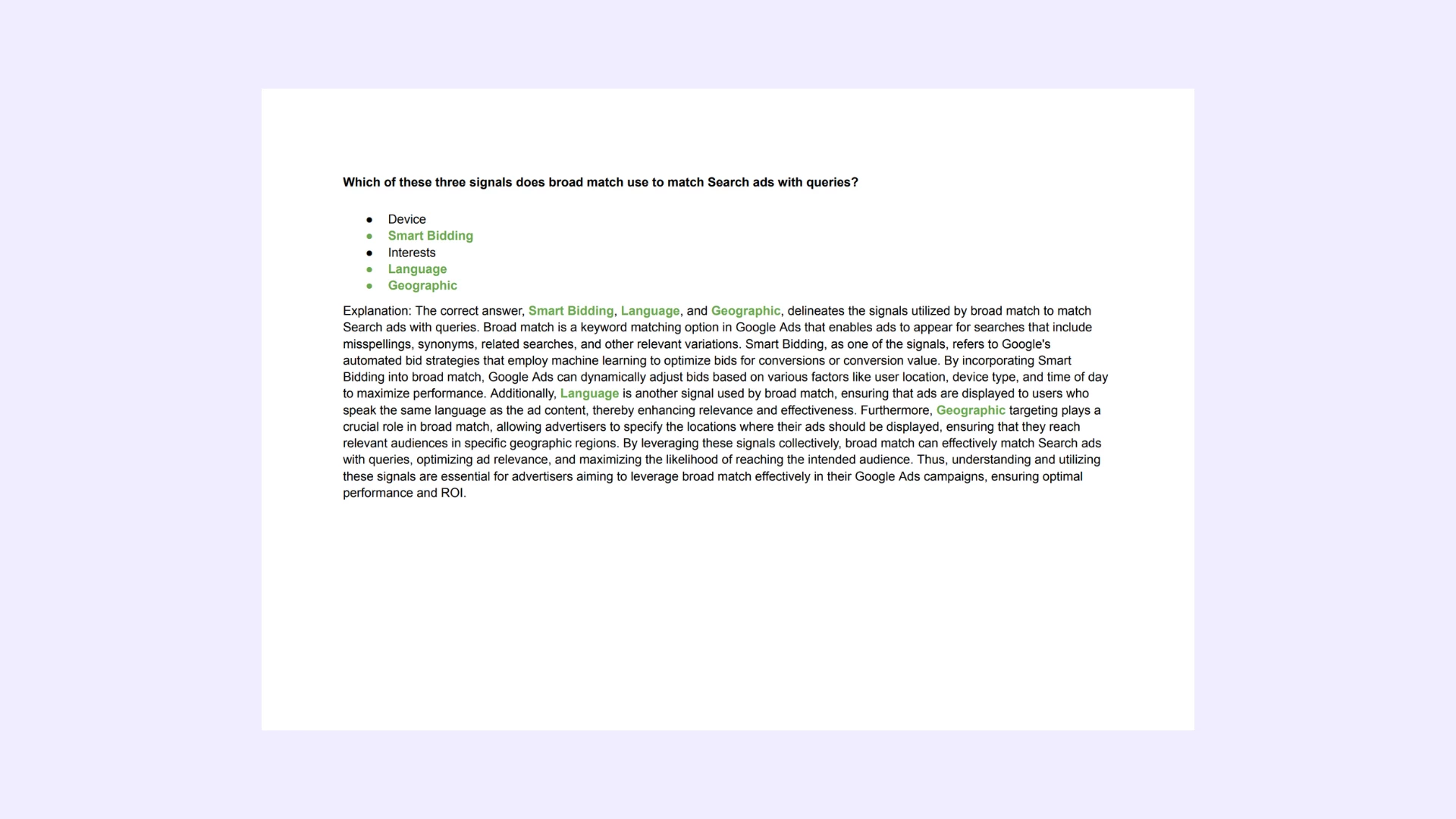When implementing an experiment, which of the following is a best practice?
Assign two campaigns to each experiment arm.
Start with multiple hypotheses.
Test one variable for each experiment.
Divide your audience into as many arms as possible.
Choose an option to see if it’s correct. Check the explanation below. Learn Smarter, not Harder.

Google Ads Roll. Includes Answers for Every Real Google Ads Certification Exam.
All-in-One: Get all Google Ads exams answers with explanations in one bundle. This package includes answers for every current Google Ads certification. Regular updates to reflect the latest exam version. -> See what's included.
Questions | Answers | Explanations. Free Lifetime Updates.


Need a single cerification exam answers? Check out our -> list of certification exams answer keys. Learn Smarter. Obtain or Renew your certificates with peace of mind!
Explanation: When implementing an experiment, which of the following is a best practice?
Explanation: In implementing an experiment, a fundamental best practice is to test one variable for each experiment, which is the correct answer. This approach ensures clarity and precision in understanding the impact of the variable being tested, as it allows for a direct comparison between the control group (without the variable) and the experimental group (with the variable). By isolating a single variable, the experiment becomes more manageable, making it easier to analyze the results accurately. Testing multiple variables simultaneously can lead to ambiguity in interpreting the outcomes, as it becomes challenging to determine which variable contributed to the observed changes. Additionally, focusing on one variable at a time facilitates a more efficient and effective experimentation process, enabling marketers to iterate and refine their strategies based on the insights gained. Therefore, adhering to the best practice of testing one variable for each experiment enhances the reliability and validity of the findings, ultimately leading to more informed decision-making and improved campaign performance.
Were do I find this certification program?
This certification program is available on the Google SkillShop Platform. With our file, you can get certified in just a few minutes. Free updates are included.
Save time on exams and spend more time practicing.
Best-value Guides
- Special Bundle Offer Google_Ads_Roll
- Special Bundle Offer HubSpot_Exams_Roll
- Special Bundle Offer Google_SkillShop_Roll
- Special Bundle Offer Marketing_Platforms_Roll